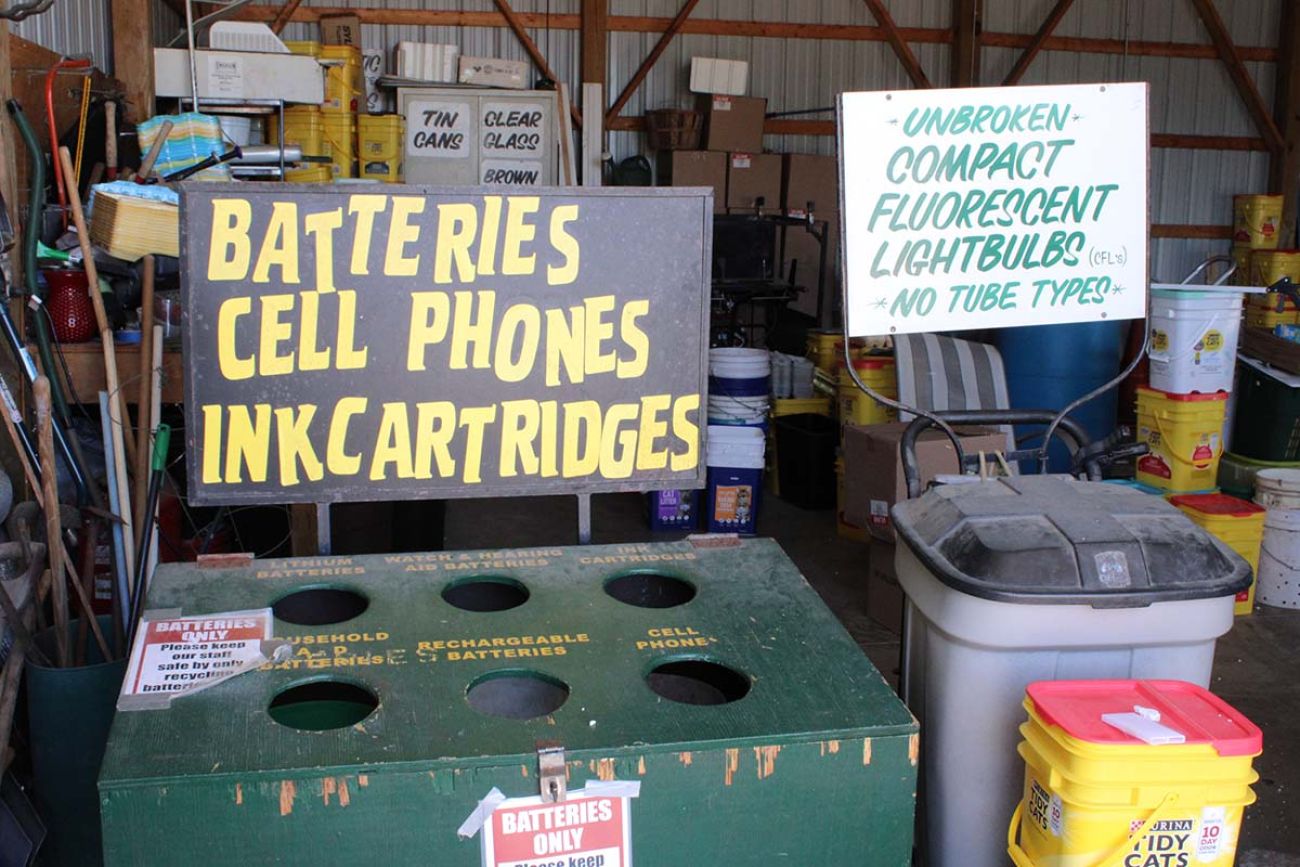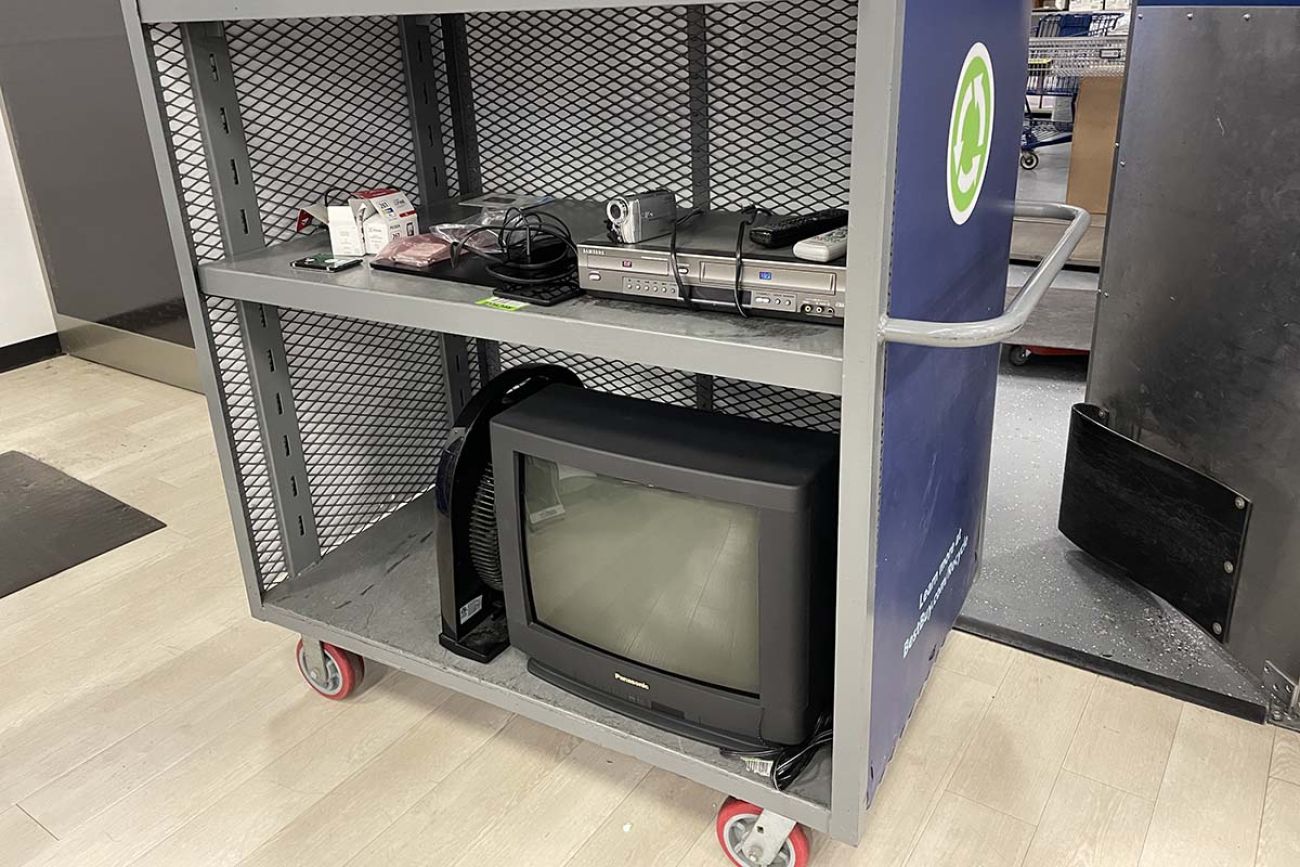Michigan’s electric energy future could be wasting away in a junk drawer

- Recycling old electronics collecting dust in junk drawers is a promising solution to Michigan’s rising critical-mineral demand, experts say
- Michigan government and researchers are trying to boost the state’s electronics recycling market
- But recycling alone likely won’t provide all the critical minerals needed for Michigan’s electrification goals
Lily Wilkin has four old phones tucked away in her closet, and she has no plans to recycle them.
“I keep them for nostalgia,” she said.
Wilkin works at Best Buy, the nation’s largest retail collector of electronic waste — from CRT TVs to hard drives to fans. Wilkin said at least two customers drop off electronics for recycling every day at the East Lansing Best Buy.
Even though she knows about the e-waste collection program, she’s choosing to keep her old electronics.
Whether it’s due to nostalgia or indifference, many people are making the same choice and withholding a valuable source of “critical minerals,” 50 non-fuel materials or substances that the U.S. Department of Energy has declared essential for clean energy technology but at risk of supply chain disruptions.
As the lack of critical minerals becomes a looming choke point in the U.S. energy transition, experts say there’s major potential in the piles of unwanted electronics lying in junk drawers across Michigan and the nation.
Michigan’s electric vehicle future will require millions of batteries, hundreds of thousands of charging stations and moving the state to renewable sources of energy.
And while an old phone or phone charger may seem small compared to that large undertaking, the rare materials those electronics hold are valuable, said Jeff Spangenberger, group leader in materials recycling at Argonne National Laboratory.
“It all adds up,” he said.
For every million smartphones, 35,274 pounds of copper and 772 pounds of silver can be reused, according to the U.S. Environmental Protection Agency.
The problem is getting those million phones recycled.
How to recycle electronics
While it might be inconvenient, electronics recycling is relatively easy.
And aside from capturing valuable material, it diverts electronic waste from landfills, reducing air and groundwater pollution.
Some electronics retailers, such as Best Buy, take most electronics to recycling centers for free. And many Michigan townships have drop-off centers or events where residents can bring in their old electronics for a small fee.
Delta Township, just outside Lansing, holds a monthly electronics recycling event and said it will take “anything with a cord,” charging 50 cents a pound.

Last year, the township collected 2,734 pounds of electronics from residents.
Registered recyclers in Michigan are required to destroy data before recycling a device, but to ensure your sensitive data is wiped, erase your hard drive before turning it in.
Once the electronics are collected, they head to a recycling plant, where the items are dismantled, shredded and sorted by the type of material.
Related:
- Researchers say a copper shortage could imperil Michigan’s EV future
- Michigan schools receive $24 million to buy electric buses
- Trash into treasure: Rethinking waste in Michigan college towns
Matt Flechter, market development recycling specialist at the Michigan Department of Environment, Great Lakes, and Energy (EGLE), said despite community skepticism, he’s seen firsthand that electronics recycling works.
“If you have some old phones that you know you’re not going to use, get it recycled for goodness sake,” he said. “Those materials need to find their way back into new products. And they will.”
Electronics recycling 101
- Find closest electronics recycling drop off
- Check that the recycling center takes the items you want to recycle
- Erase hard drive for electronics containing sensitive data
- Drop off old electronics at local electronics retailer or recycling center
- Don’t throw away electronics in the trash or the recycling bin
Ramping up state efforts
Getting e-waste out of homes and back into supply chains has become a key focus of the Michigan government and researchers, who are scrambling to create a profitable recycling pipeline for this valuable waste stream.
In an effort to boost Michigan’s market for critical minerals, the Department of Environment, Great Lakes, and Energy (EGLE) is offering $4.75 million in grants for university research about critical mineral recycling.
Universities are slated to receive funding starting this fall.
Flechter said nationwide investment in critical minerals is ramping up, and Michigan is trying to get ahead of that with the critical mineral recycling grant.
“We’re a hub for manufacturing,” said Flechter. “It only makes sense that this region of the world is a leader in recycling and recirculating materials back into the manufacturing process.”
Michigan already requires manufacturers to take back customer’s unwanted electronics for reuse or recycling at no charge under the Electronics Take Back Law run by the state Department of Environmental Quality (now EGLE).
The law applies to “covered electronics,” which include but are not limited to computers, TVs and printers.
But it’s not clear if the law is effective, since the last publicly released electronic waste report is from 2016. And from that report, most manufacturers were consistently missing their goal to recycle 60% of the previous year’s sales by weight
Plus, cell phones, a potentially large source of critical minerals, are not included in the law.
“There is a real need for manufacturers to step up,” said Flechter, but manufacturers are only one piece of the puzzle.
Promising research leads to better recycling
In addition to not recycling enough, when waste does get recycled, recyclers can’t capture all of the critical minerals they contain.
But Michigan Technological University researchers are looking to change that.
Lei Pan, associate professor in chemical engineering at MTU, and his lab are improving recycling technology for lithium-ion batteries, which are found in cell phones and laptops.
Pan, who works with the ReCell Center, a national collaboration of industry, universities and labs improving recycling technologies, said compared to “state of the art” recycling technology, this new technology will be more cost effective and more environmentally friendly, reducing carbon emissions by at least 50 percent compared to mining new material.
“Most importantly, we can do it,” said Pan. “We can produce those materials at a larger quantity compared to other producers.”
The new technology uses chemicals to separate and refine the critical minerals after crushing the batteries and sorting out the materials. The process captures more product and results in higher quality material that can be reused up to 10 times.
According to the ReCell Center, the recycled materials can cut battery production costs by 10 to 30 percent, which would help bring down the price of electric vehicle batteries.
Argonne National Laboratory’s Spangenberger, director of the ReCell Center, said recyclers need to make a profit to invest more in electronics recycling, and Pan’s research is one way to get there.
“(New) technology is going to reduce costs and increase the value of the products, and at the same time, it’s going to reduce our need to depend on other countries,” he said.
New recycling plants will bring jobs back to Michigan and reduce carbon emissions from transportation since most lithium-ion recycling occurs overseas, said Spangenberger.
Pan’s lab is expanding its research by opening a testing facility next summer with $8.1 million awarded to MTU from the federal Infrastructure Investment and Jobs Act.
“E-waste can be recycled,” said Pan. “And once it’s recycled, all the material can be returned to new products.”
To keep up with demand, recycling isn’t enough
Even with advancements on the horizon, experts say e-waste recycling isn’t a silver bullet.
Access to critical minerals needs to increase dramatically and rapidly, which means that in addition to getting better at recycling, we will likely need to get better at extracting minerals from other sources.
That includes taking a second look at the leftovers of mining.
Pan’s lab is working with Eagle Mine in Marquette County to extract an additional 56 million pounds of nickel and 2 million pounds of cobalt from its mine tailings.
If successful, the refining process could be used at other mines in the nation.
Where Michigan stands now, our critical mineral recovery and supply is not ready to support the state’s energy decarbonization goals.
But we’re a state built on manufacturing and innovation, said Flechter.
“We double down on the work that’s already being done,” he said, “and make it even more efficient and effective.”
Michigan Environment Watch
Michigan Environment Watch examines how public policy, industry, and other factors interact with the state’s trove of natural resources.
- See full coverage
- Subscribe
- Share tips and questions with Bridge environment reporter Kelly House
Michigan Environment Watch is made possible by generous financial support from:
Our generous Environment Watch underwriters encourage Bridge Michigan readers to also support civic journalism by becoming Bridge members. Please consider joining today.
See what new members are saying about why they donated to Bridge Michigan:
- “In order for this information to be accurate and unbiased it must be underwritten by its readers, not by special interests.” - Larry S.
- “Not many other media sources report on the topics Bridge does.” - Susan B.
- “Your journalism is outstanding and rare these days.” - Mark S.
If you want to ensure the future of nonpartisan, nonprofit Michigan journalism, please become a member today. You, too, will be asked why you donated and maybe we'll feature your quote next time!






